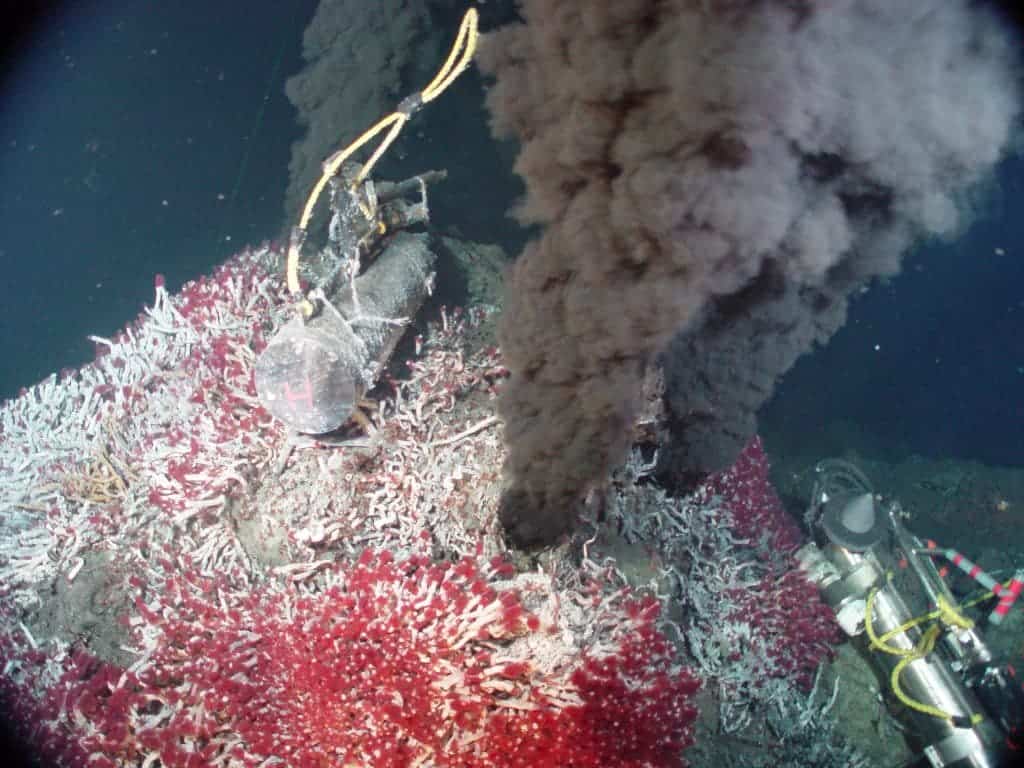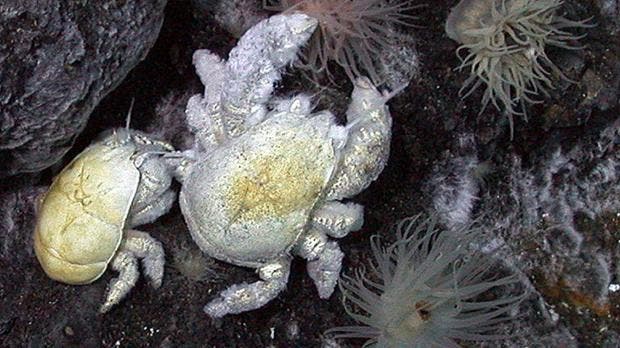Scientists have discovered and described the only known species of Yeti Crab that resides in Antarctica’s Southern Ocean. The crab, which has white fur-like bristles all over its body, survives in an extremely inhospitable environment, close to the hydrothermal vents that spew hot water in the freezing ocean.
Sven Thatje from the University of Southampton first discovered the species in 2010, thanks to footage from a remotely-operated submersible vehicle (ROV). The ROV dove 8,500 feet (2,500 meters) below sea level and found that the yeti crab is the dominant species in the environment created by the hydrothermal vent. After that, they gathered specimens and studied them using genetic sequencing and computed tomography (CT) scanning. Their description of the creature’s strange morphology is published today (June 24) in the journal PLOS ONE. They named it Kiwa tyleri, after respected British polar and deep-ocean biologist Paul Tyler from Southampton University.
Thatje explains why this discovery is significant:
Crabs and lobsters are very rare in Antarctic/Southern Ocean waters because of the unusually low seawater temperatures,” Thatje said. “A physiological limit to maintaining activities required for survival (ventilation, molting, mating) appears to exist at around 0.5 degrees C [32.9 degrees F].”
In other words, even though the crab is adapted to a cold environment and developed a stark white color and “hairy body”, it still can’t survive in very cold waters – that’s why they are so crowded together around the hydrothermal vent. A hydrothermal vent is a fissure in a planet’s surface from which geothermally heated water pumps up into the ocean, creating a hot pocket of water. In 2012, an expedition found hundreds of crabs clumped up one over another.
“They’re literally, in places, heaped up upon each other,” Alex Rogers, a professor of zoology at Oxford University who led the expedition to the East Scotia Ridge, said in 2012. Photographs taken by Rogers’ team show 600 crabs per square meter.
It seems like the entire species inhabits only a few cubic meters, which raises the question: if so many crabs are clumped up together, what do they eat? The answer was surprising: the yeti crab uses its “fur” to harvest bacteria, which it grows and then relies on for nutrition.
“The Antarctic Yeti Crab is trapped in its warm-water hydrothermal vent site by the cold polar waters of the surrounding deep-sea. The species has adapted to this very limited sized habitat — of a few cubique metres in volume — by occurring in highly-packed densities and by relying on bacteria they grow on their fur-like setae [stiff bristles] for nutrition,” Dr Thatje said in a press release.











